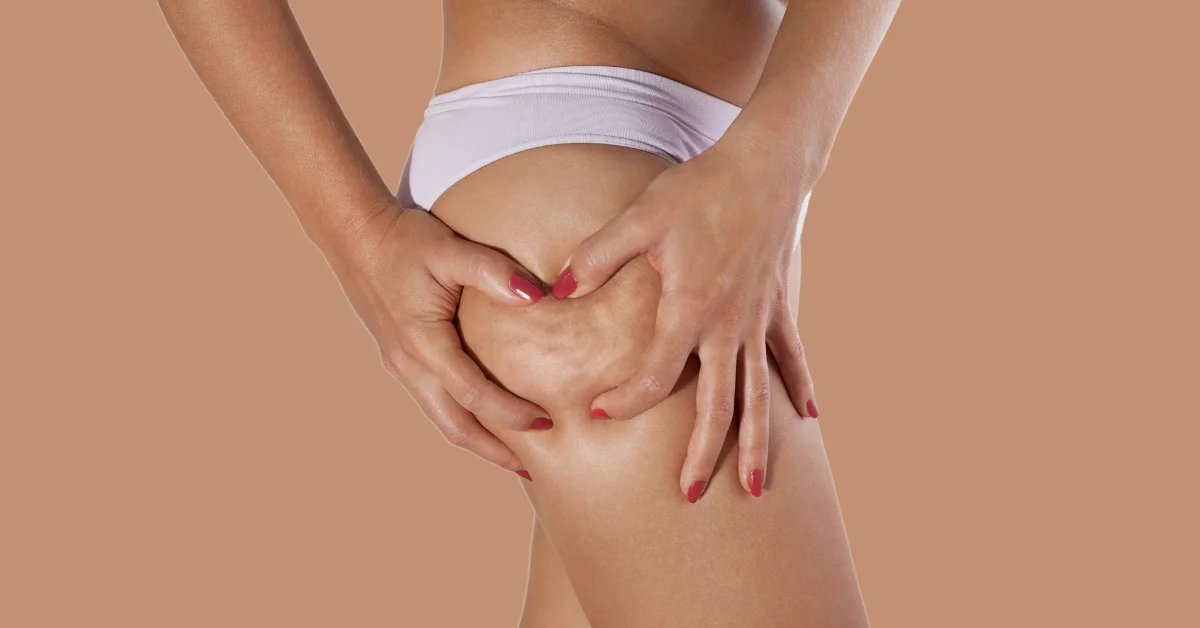Thigh liposuction can effectively remove excess fat, giving the legs and hips a more proportioned contour.
Stubborn “saddlebags” and fat that causes the inner thighs to rub against each other are among the most common aesthetic concerns.
This fat can even lead to chafing, which can make normal exercise uncomfortable. Luckily, thigh liposuction might just be the answer to these woes.
Ideal Candidates
The good news is that the thighs respond better to liposuction than some other areas of the body. “The fat in the thigh has two layers, versus three in the back and trunk. This makes it ideal for liposuction,” explains Dr. Andrew Trussler, a board-certified plastic surgeon who practices in Austin, Texas.
Women tend to seek thigh liposuction more often than men. This is because female hormones cause fat to deposit around the pelvis, buttocks, and thighs, whereas men tend to store excess fat in the abdominal region. Thigh liposuction is not intended to be a weight loss procedure, and is most effective for people who are close to their ideal body weight.
The best candidates for thigh liposuction are in good general health — people with poor blood circulation, diabetes, or weakened immune systems should not undergo the procedure.
Thigh liposuction is also more successful on patients whose skin shows sufficient elasticity to take on the thigh’s new contours post-procedure, without appearing loose or crepey.
The Procedure: Inner, Outer, and Frontal Thigh Liposuction
While leg liposuction is performed in much the same way as liposuction on other parts of the body, those who undergo thigh liposuction often have different goals than patients interested in liposuction of the knees and ankles.
“Thigh liposuction patients are generally interested in volume and cellulite reduction,” explains Washington, DC plastic surgeon Dr. Earl Johnson. “Knee and ankle liposuction patients are usually looking for smaller targeted areas of reduction.”
Additionally, thigh liposuction is frequently combined with some form of non-invasive treatment like laser or ultrasound. According to Johnson, this provides skin tightening and cellulite reduction benefits which cannot be achieved through liposuction alone.
Before coming up with a liposuction treatment plan, a plastic surgeon will assess the leg and thigh area “circumferentially” — that is, as a cylindrical structure to be viewed as a whole.
“Liposuction of the leg for women should wrap around the leg to decrease circumference and maintain shape without masculinizing or flattening it,” says Trussler. “The legs are a difficult area for liposuction, but it’s very commonly requested. Circumferential treatment and staying in an intermediate plane with small cannulas helps avoid contour irregularities.”
After examining the area as a whole, a plastic surgeon can determine which areas of the leg will benefit from liposuction. The procedure may be performed on either the inner and outer areas of the thighs, or a combination of the two. It can also be combined with liposuction of other body areas. Liposuction on frontal areas of the thighs is generally avoided as it can result in contour irregularities.
Local anesthesia is administered to minimize trauma, bleeding, and discomfort.General anesthesia may also be used, depending on the needs of the patient.
Tiny incisions are then performed in the treatment area. The surgeon inserts a thin cannula (tube), and breaks up the excess fat by moving the tube back and forth. The fat is then suctioned out with a vacuum or syringe.
Inner Thigh Liposuction
Most women interested in the procedure are seeking to achieve thinner thighs that do not touch one another. In such cases, liposuction generally addresses the entire length of the inner thigh. This ensures a consistent, well-proportioned, and natural-looking shape throughout the area.
Outer Thigh Liposuction
When excess fat develops on the outer thighs — also known as “saddlebags” — the thighs make the legs look short and disproportionate as a whole. By performing outer thigh liposuction, a plastic surgeon can eliminate this effect, restoring a proportionate contoured appearance.
Frontal Thigh Liposuction
The front of the thighs are not treated as often as the inner and outer thighs. In fact, many surgeons refuse to perform liposuction of the anterior thighs altogether. Liposuction in this area can easily produce irregularities of the skin, and often results in unsatisfied patients.
However, in some cases a plastic surgeon may choose to perform frontal thigh liposuction in order to maintain balance with the rest of the thigh and leg. That said, “the front thigh has a different density of fat, and should be suctioned in the deeper plane to avoid contour irregularity,” Trussler warns.
Recovery And Results
The decision of which areas of the thigh and leg will be liposuctioned depends on the individual needs and desires of the patient, as well as observations by the surgeon.
According to Dr. Larry Sargent, a board-certified plastic surgeon with offices in Salt Lake City and Bountiful, Utah, the areas of the leg most commonly treated with liposuction are the lateral and medial thighs, inner knees, calves, and ankles.
Thigh liposuction is often combined with liposuction of other body areas. “Thighs are commonly liposuctioned with the hips and flanks to improve the shape of the waist and buttock, as well as the knee region to improve the shape of the lower thigh,” says Trussler. “The fat can also be harvested and injected in the buttock to improve its shape and projection.”
When performing liposuction on multiple areas, it is very important to limit the amount of fat and fluid removed at one time, according to New Jersey board-certified plastic and reconstructive surgeon Dr. Russell Ashinoff, especially when performing the procedure in an outpatient setting. “Large volume liposuction is possible, but may require overnight monitoring in the hospital,” he says.
Recovery time varies from patient to patient. According to Trussler, patients can begin doing some cardio exercise about three weeks postoperatively, but will need to wear a compression garment to reduce swelling and bruising.
Some results will be immediately noticeable, but the final result won’t be apparent for approximately three months. “Just like with any body contouring procedure, diet and exercise is mandatory before and after the procedure to achieve the optimal result,” says Trussler.
Cost Of Thigh Liposuction
The latest statistics from the American Society of Plastic Surgeons (ASPS) show the average cost of liposuction in general is $3,700.
While the ASPS does not share the average price of thigh liposuction specifically, the procedure typically costs between $3,500 and $7,800 depending on multiple factors. A surgeon’s fee varies widely depending on their geographic location, level of experience, and the complexity of the procedure.
It should be noted that most health insurance carriers will not cover the cost of leg liposuction because it is considered a cosmetic procedure. However, many plastic surgeons offer patient financing, so make sure to ask your surgeon about this.
Cellulite, Sagging, And Other Considerations
Sargent points out that leg liposuction is not an appropriate or effective way to treat obesity or cellulite. Rather, he says, it should be viewed as a way to remove localized areas of fat in order to improve contour.
Trussler adds that although the upper posterior thigh below the buttock — also known as the “banana roll” — is a common area of fullness, it also helps to support the buttock and should therefore be suctioned conservatively to avoid contributing to buttock sagging.
Johnson points out, “patients should be aware that there may be small areas that might require a touch-up down the road. They should also expect some soreness.”
According to Ashinoff, complications are rare. Dealing with an expert, board-certified surgeon will minimize the risks of numbness, contour deformity, asymmetry, and bruising.
“It is not uncommon for other types of physicians, including doctors without surgical training, to offer liposuction,” Ashinoff explains. “The equipment is relatively inexpensive, and it can be performed with local anesthetic, so the barrier to offering the procedure is low.” That said Ashinoff highly recommends seeking out a qualified specialist. “Inexperienced or improperly trained practitioners can cause catastrophic injury — even death,” says Ashinoff.
Before selecting a plastic surgeon to perform your leg liposuction procedure, consider their training, experience, any before and after photos, as well as testimonials from past patients. You should always be confident that you’re in good hands, and this is made much simpler by choosing a board-certified plastic surgeon.
Alternatives To Thigh Liposuction
Several alternatives to thigh liposuction exist, depending on your specific goals, budget, and preferences. Here are some alternatives to consider:
Diet and Exercise
Improving your diet and engaging in regular exercise can help you reduce excess fat on your thighs over time. Focusing on a balanced, calorie-controlled diet and incorporating both cardio and strength training exercises can help tone and slim down your thighs naturally.
Non-Invasive Fat Reduction Procedures
Several non-invasive procedures can target and reduce fat on the thighs. These options include:
a. CoolSculpting: This procedure freezes fat cells, causing them to die and be naturally eliminated by the body over time.
b. SculpSure: SculpSure uses laser technology to heat and destroy fat cells in the targeted area, which are then eliminated by the body.
c. Emsculpt: Emsculpt is a non-invasive treatment that not only reduces fat but also builds muscle in the treated area, including the thighs.
Cellulite Treatments
If your primary concern is cellulite rather than fat, there are treatments available, such as radiofrequency therapy (e.g., Cellulaze) or acoustic wave therapy (e.g., acoustic wave therapy). These treatments aim to improve the appearance of cellulite by boosting collagen production and improving skin texture.
Thigh Lift Surgery
Thigh lift surgery is an alternative to liposuction that focuses on excess skin and sagging rather than fat removal. It is typically recommended for individuals with significant skin laxity in the thigh area.
Compression Garments
Compression garments, such as thigh-high compression stockings or leggings, can help in the short term by reducing the appearance of cellulite and providing a more toned look. They are not a permanent solution but can be used in combination with other methods.
Cosmetic Injectables
While not a direct alternative to liposuction, injectable treatments like dermal fillers can help improve the appearance of the skin by smoothing out contours and addressing skin irregularities.
Is Thigh Liposuction Right For You?
Whether thigh liposuction is the right choice for you depends on your unique situation. Liposuction may be a suitable option if you’re looking to reduce localized thigh fat, achieve a slimmer contour, and have realistic expectations about the outcomes.
Before considering the procedure, it’s crucial to be in good overall health and consult with a board-certified plastic surgeon experienced in liposuction. They can assess your anatomy, discuss your goals, and provide professional advice on whether liposuction is appropriate.
Additionally, it’s worth exploring alternative treatments and considering the financial investment, recovery time, and potential impact on your body image and confidence. While thigh liposuction can be effective, the decision should be made thoughtfully, considering your specific circumstances and goals.









